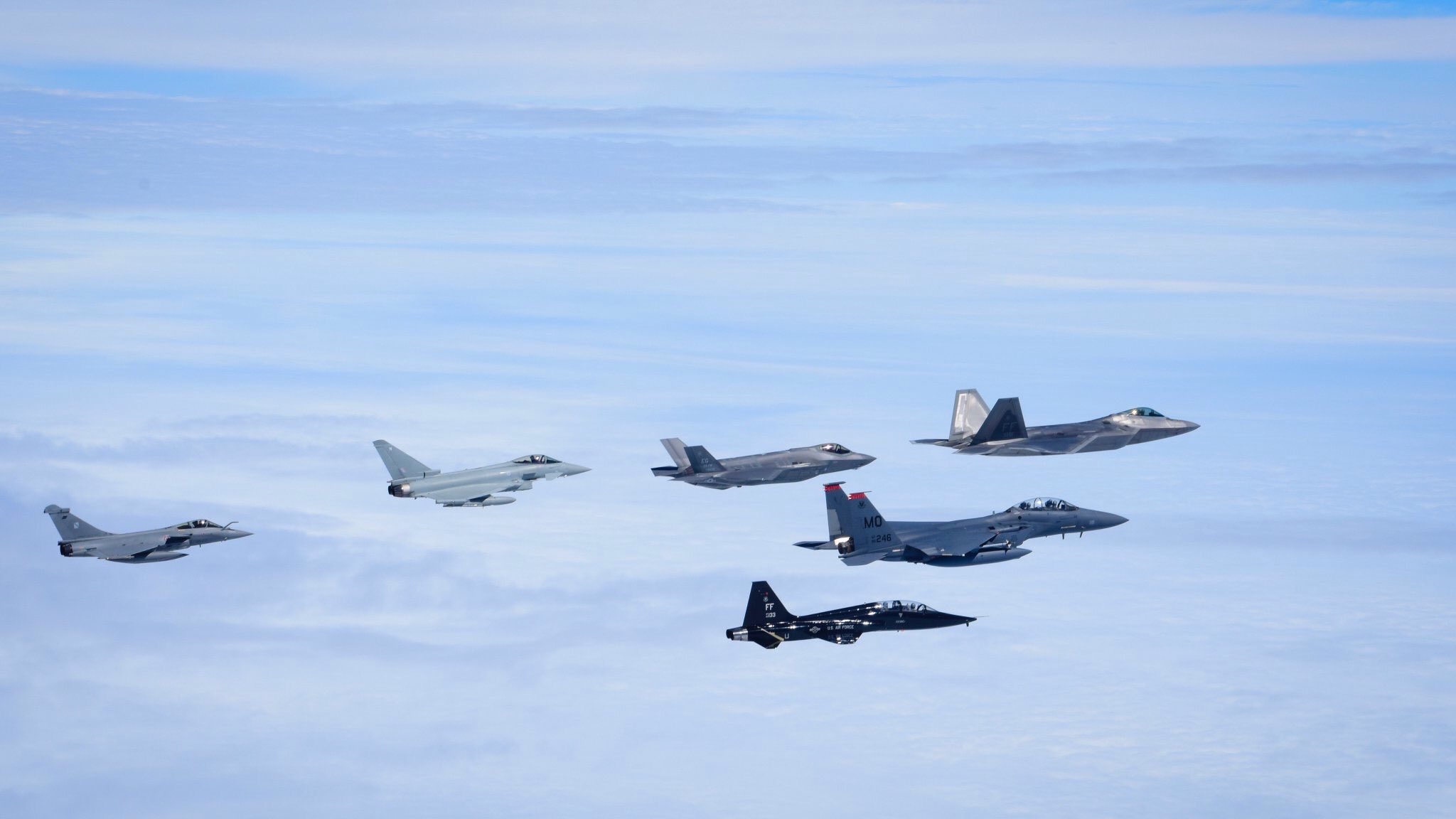The F-22 Raptor is by far one of the world’s most formidable air superiority fighter planes. It is known to outclass almost any adversary and is considered the most powerful double-engine aircraft on the planet.
However, the Lockheed Martin Raptor was taken by surprise by the French Dassault Rafale. This particular encounter was a big enough hit to Washington’s confidence in F-22. But beyond that, it also raised questions about whether Rafale could also take on another jet the USAF prides itself upon – the mighty F-35.
The F-22 Raptor
The F-22 Raptor is an advanced tactical fighter aircraft with agility, stealth, and range. This supersonic, dual-engine fighter jet was developed to give the USAF absolute control over the skies.
The fighter aircraft combines a revolutionary leap in technology and capability with reduced support requirements and maintenance costs. The Raptor’s engines produce more thrust than any fighter engine, allowing it to “supercruise.”
This is the ability to efficiently cruise at supersonic airspeeds without using afterburners. The aircraft’s supercruise, along with its stealth, integrated avionics, and maneuverability, gives its pilots a “first-look, first-shot, first-kill” ability against enemy aircraft.
The Raptor not only has an inherent precision ground-attack capability but can also carry existing and planned short—and medium-range air-to-air missiles in its internal bays. The F-22 also comes with an internal 20-mm cannon and provisions for carrying precision ground-attack weapons.
However, despite all of its advanced specifications, the F-22 Raptor was once shot down by a fourth-generation fighter jet—Dassault’s Rafale.
Past Forward
While remarkable in its own stead, in comparison to the Raptor, this French warplane doesn’t appear to be as impressive. It is a versatile “omnirole” fighter that can perform all kinds of missions and carry a very wide variety of weapons.
However, it can only reach a speed of 2 Mach, slower than the Raptor’s top speed of 2.25 Mach. The F-22’s rate of climb, maneuverability as well as avionics outpace those of the French jet.
Yet, more than a decade back, in 2009, when Rafale was the underdog in the international military aviation market, it still managed to shoot down the F-22 in mock combat.
The Rafale put the Raptor in a disadvantageous position in the “dogfight.” The 2013 footage from the French jet’s front camera attests to this.
The US had earlier admitted losing just one F-22 to a Mirage-2000 flown by an Emirati Aviator. However, this was proven to be untrue as the video showed that a Rafale moved into a good position to lock the F-22 in its range to launch the infrared-guided Mica missile.
In actual combat, the advanced US fighter would have indeed been “shot down.”
This mock combat showed that the F-22’s fighting capabilities beyond visual range (BVR) are the real cause of worry for its adversaries. However, in close quarters, the mighty Raptor was at a disadvantage.
What About F-35?
It has almost unanimously been accepted that the F-22 is much more powerful than the F-35. So, this old dogfight from 2009 raises a relevant question: Would a Rafale be able to beat an F-35 fighter jet, too?
The F-35 has more field experience than the F-22. Unlike the Raptor, which the US refused to export to keep this advanced technology to itself, the F-35 aircraft has been exported globally and is used by several US allies.
Its unique avionics and stealth capabilities give the fighter an edge over most other warplanes known today.
Just like the Raptor, the F-35 is likely to have an advantage in stealth. Rafale has somewhat of a headstart in BVR combat since it is integrated with the Meteor missile. However, this might not be the situation for long, as some European F-35s are set to be armed with the same missile.

Once this is done, the F-35 will definitely be a step ahead in BVR situations. There’s a high chance that Rafale will find it hard to detect the F-35 due to the latter’s low Radar Cross-Section.
The twist, though, is likely to be in a Within Visual Range (WVR) combat situation. In dogfights, the French jet can play to its strength. Rafale’s agility, thrust-to-weight ratio, and maneuverability are likely to prove lethal to the F-35.
This would be a case of history repeating itself, for an F-35 vs. Rafale dogfight is likely to be very similar to the exchange that happened between Rafale and the F-22 more than a decade ago.
- Written by Shreya Mundhra/EurAsian Times Desk
- Follow EurAsian Times on Google News